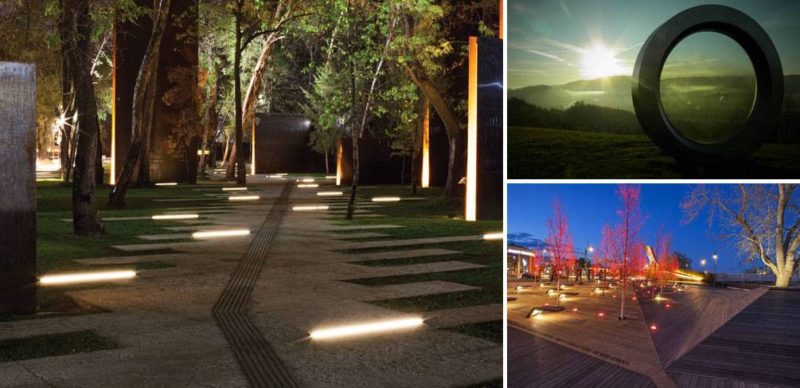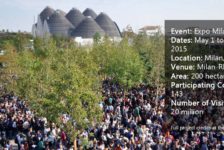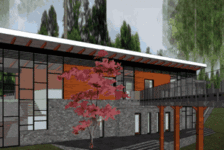Article by Rose Buchanan We take a look at 6 landscape based memorials and what they commemorate and how. Memorials function as places or objects which speak of the memory of an event or person. The most common form is to use a statue or plaque placed at a strategic location. While these memorials provide us with a tangible element of memory, they fail to engage with powerful elements of experience and emotion. One might briefly respond to the image of a fallen soldier cast in iron and take the obligatory snapshot posing in front of it, but moments later that feeling and memory is gone. This is where landscape becomes a powerful element in creating a memorial experience that not only allows the user to become aware of the past, but creates a tangible experience within the present. Landscape Architects Network has featured a number of these memorials and in this article we look back at six landscape-driven memorials that provide a new way of approaching memorial design.
Landscape Based Memorials
1. Gordan Lederer Memorial, by NFO, in Čukur Hill in, Croatia This powerful memorial commemorates the death of a Croatian photographer and videographer who was killed by a sniper while filming soldiers in the Cukur Hills on August 10 1991. The memorial was designed by NFO as a winning submission in a design competition and is located at the exact position where Lederer died. What makes this memorial unusual is the manner in which visitors are taken through an experience which speaks of Lederer’s life and death while using the breath-taking landscape as a backdrop to the story. The design uses hard, human-fabricated materials which contrast to the natural landscape, highlighting the beauty within the tragedy. Visitors are taken up to viewpoint by a concrete pathway symbolising his life. At the end of the path is a glass frame encased in stainless steel, resembling a camera lens and punctured with an imitation bullet hole. As the visitor looks through the glass to the view of the Una River Valley below, they are confronted with the memory of Lederer’s death, creating a memorial experience.
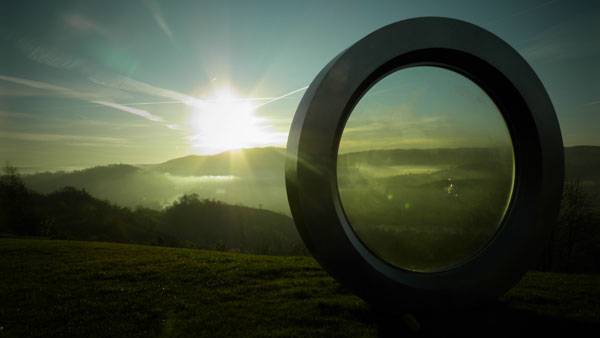
Gordan Lederer Memorial. Photo credit: Daniel Pavlić
Mexico City is well known for the drug war which has accounted for more than 60,000 deaths between 2006 and 2012. Thus, this memorial, which was opened in 2013, needed to tell the story of the victims of violence while striving to bring the community together. The memorial is located in Chapultepec Park and the designers, Gaeta-Springall Architects, used the park landscape to create a memorial which also functions as a public space. This was achieved through the use of 70 towering steel walls which stand as reminders of the victims. Lit eerily from below and reflected in pools of water, these walls speak of the multiple conflicts and struggles while acknowledges the continuing struggles of the present. Visitors are invited to engage with the walls by expressing their own struggles with chalk.
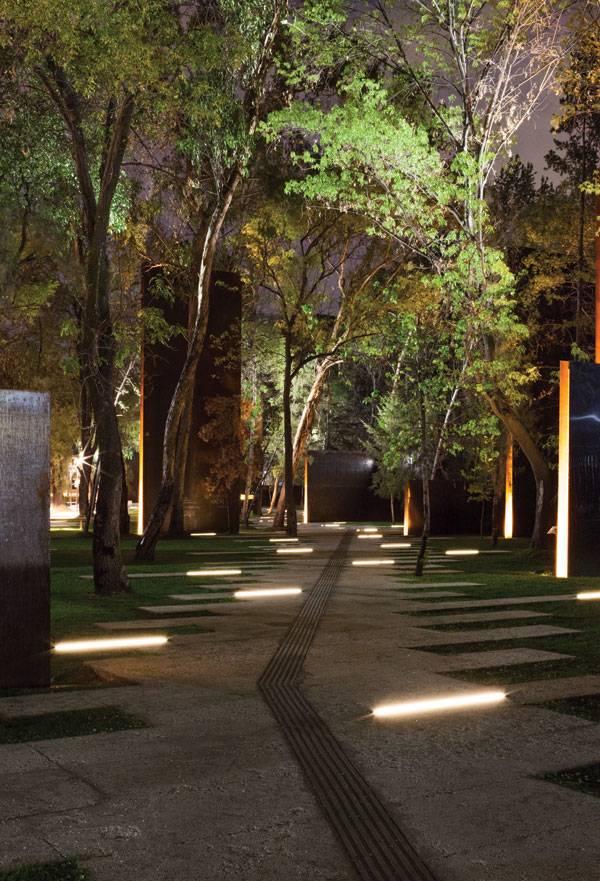
Memorial to Victims of Violence in Mexico, by Gaeta Springall Architects.Taken in Year: 2013. Photo credit: Sandra Pereznieto.
Memorials are usually symbols of great tragedy, but by placing them in the landscape they can become part of the culture of a city, providing functional space and hope for the future. Saiki Peace Memorial Park by Earthscape/Noom Architects achieved this by drawing on the Japanese connection with nature to create a space that stands as a symbol of peace as well as a space for people to relax and enjoy. The design of the park-like space is simple yet beautiful and consists of a large open grassed area with geometric white pathways and elements. The forms quietly symbolise the memory of the past with functional spaces that inspire people to move along them and stay active.
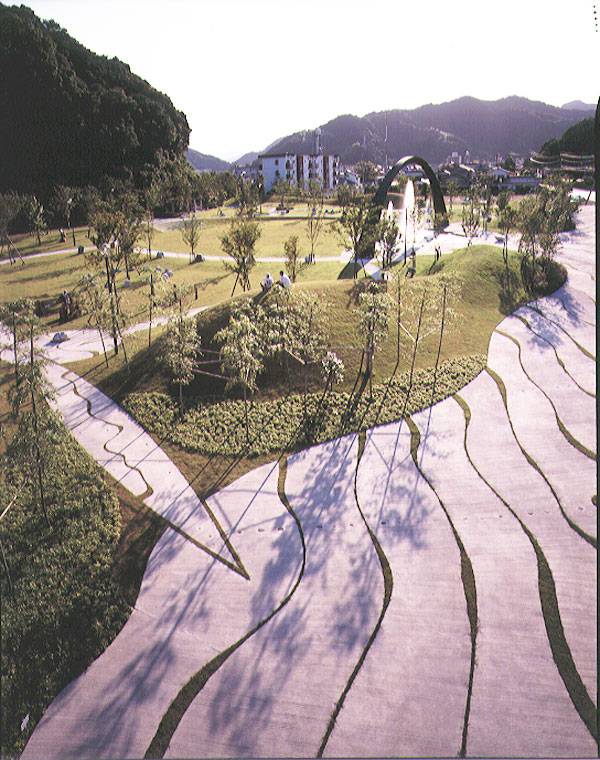
Saiki Peace Memorial Park. Photos courtesy of Earthscape
Gebran Tueni was a former journalist and politician who fought for independence in Beirut during the time of civil war. He was tragically killed in a car bomb in 2005 and the memorial designed by Vladimi Jurovic was opened in 2011. The memorial is unusual as it commemorates the life of Gebran in a manner which uses the landscape of the city to symbolise his life as opposed to the usual static memorials. This approach uses granite bands of different widths, inscribed at one end with his oath, which was delivered shortly before his assassination. These words are lit up at night in symbolic defiance of the threats and the ultimate violence of his death. Surrounding the granite are olive and oak trees with loose pebbles engraved with Tueni’s name, providing visitor with tangible mementos.
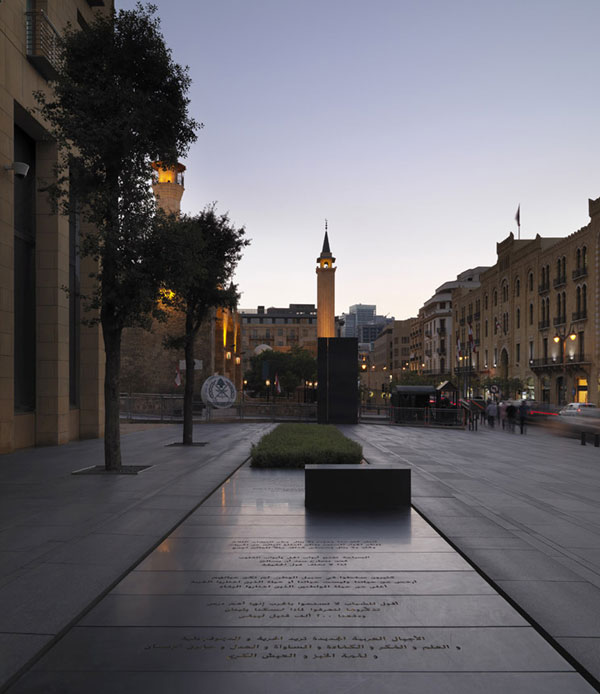
Photo Credit: Gebran Tueni Memorial, by Vladimir Djurovic Landscape Architecture, Beirut, Lebanon
Poppy Plaza is a memorial landscape that has developed over time and has recently been revived to bridge the gap between affirming old connections and creating new memories. It started in 1922 where an unused open space allowed families to plant a tree for every fallen solider who did not have a grave. Up until 1928 a total of 3278 trees were planted, many of which are now nearing the end of their life cycle. In order to maintain the sense of memory, Marc Boutin designed a public space which included the planting of new trees as well as creating a sense of place through Cor-Ten steel memorial walls, inscribed with poems and speeches. The space also provides a new connection to the Bow River, drawing on the river’s emotive quality to enhance the feeling of contemplation and remembrance.
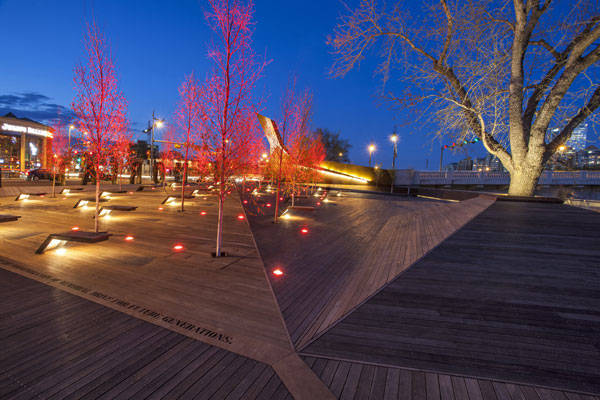
Poppy Plaza by Marc Boutin Architectural Collaborative and Stantec Consulting, Calgary, Canada
Gustafson Porter approached the memorial to the Princess of Wales as a means to create a memorial which could be occupied as an everyday space. In this way she used the concept of a circular fountain to embody the qualities of Diana that made her so loveable: her inclusiveness and her accessibility. The sculptural quality of the white granite within the park draws people to the space, yet has a gentle expansive energy that radiates outward into the landscape. Water flows at various speeds and over different textures, representing the figure of Diana: tangible, cozy, never still, and, in a way, troubled.
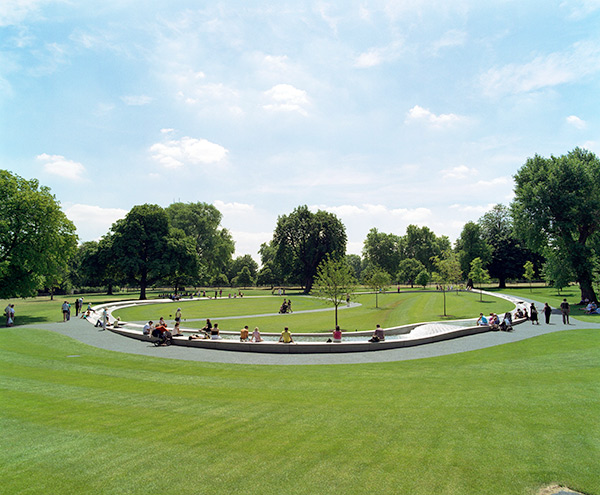
Picturesque day at Diana Memorial Fountain | image credit: Peter Guenzel
These six projects are beautiful examples of how memory, landscape, and public space can be combined to enrich their environments and create memorable experiences. They do not call for touristy photos or lengthy explanations but allow visitors to create their own meaning.
Are there any memorials you would add to the list? Go to comments Recommended Reading:
Article by Rose Buchanan
Published in Blog




